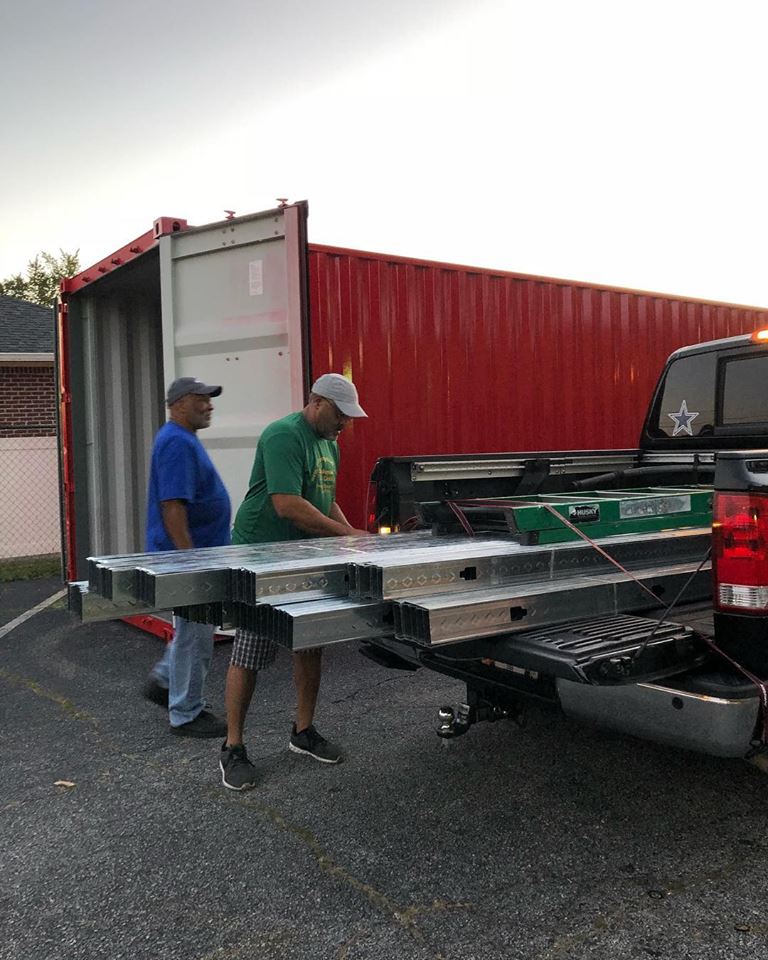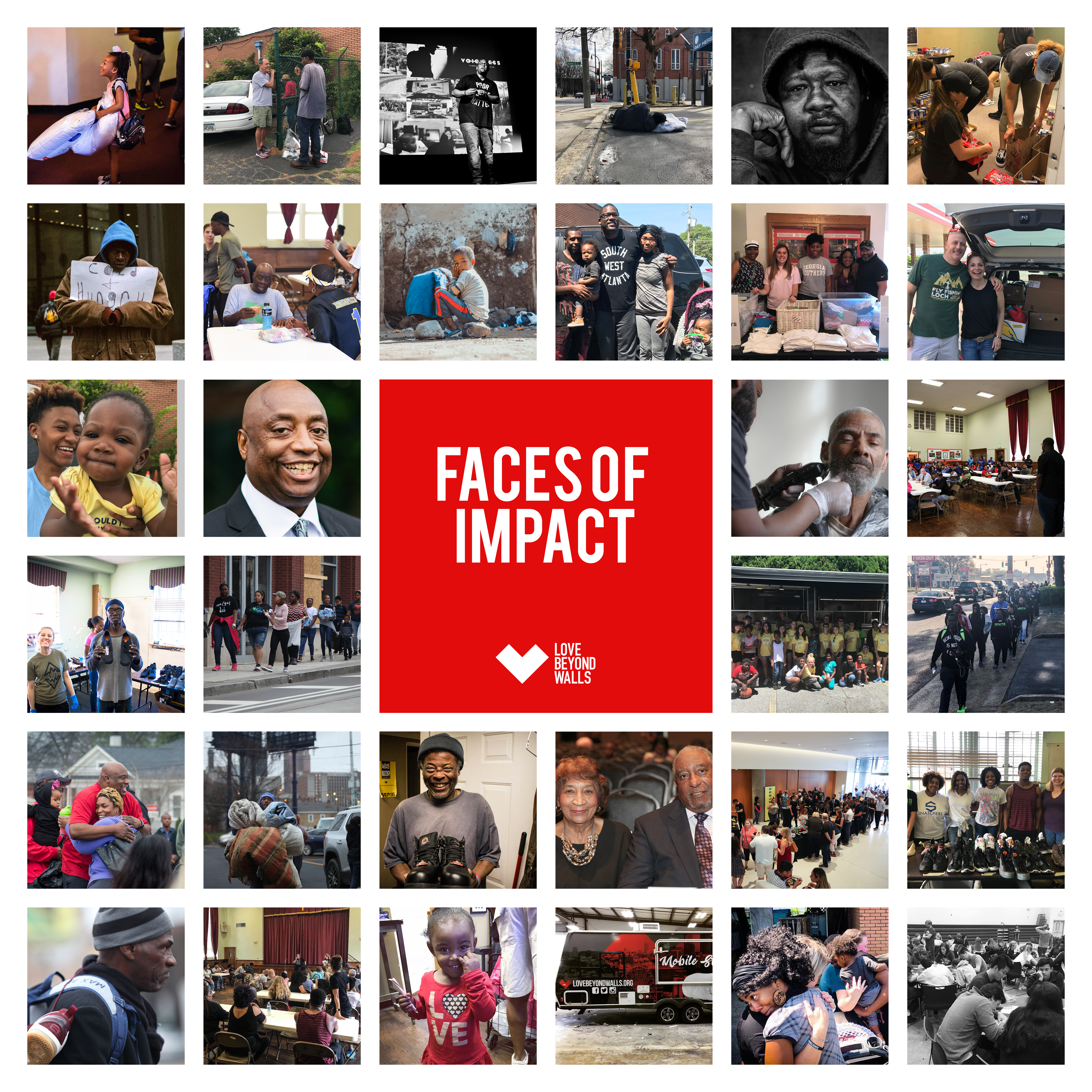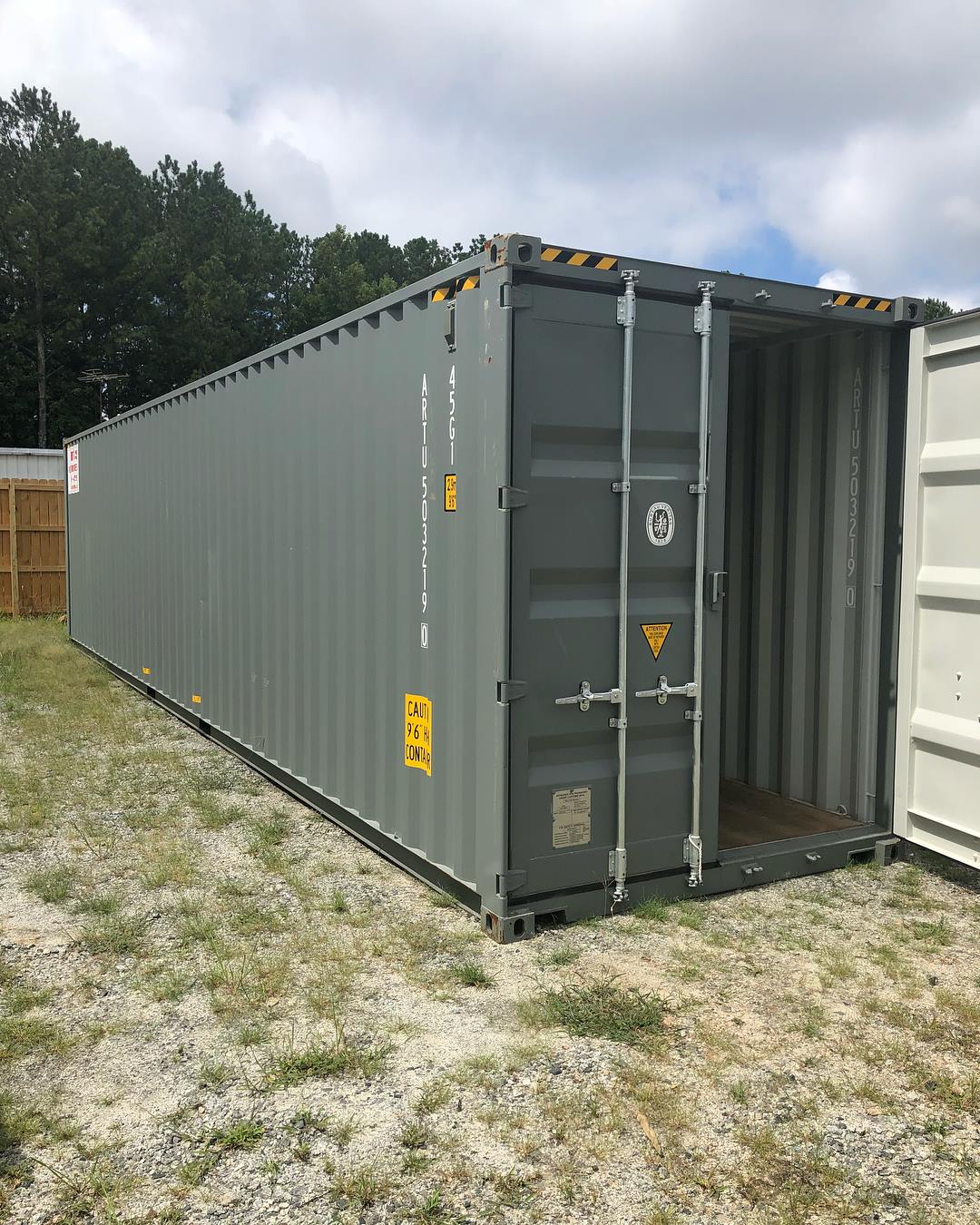
Today, I took another leap of faith as a social impact leader. We purchased a 40FT Shipping Container to create something that doesn’t exist in Atlanta or around the country. I feel all of the vulnerability that you have in starting a new project. Why? Because this will be our biggest and most meaningful conversion project to date. However, I’m being driven by two things:
Firstly, I’m being driven by the fact that there are many people suffering and need honest advocacy. Second and last, I’m being driven because I know this is what God would have us do to take #lovebeyondwalls
Excited to share the details soon. The countdown just got real.
Terence
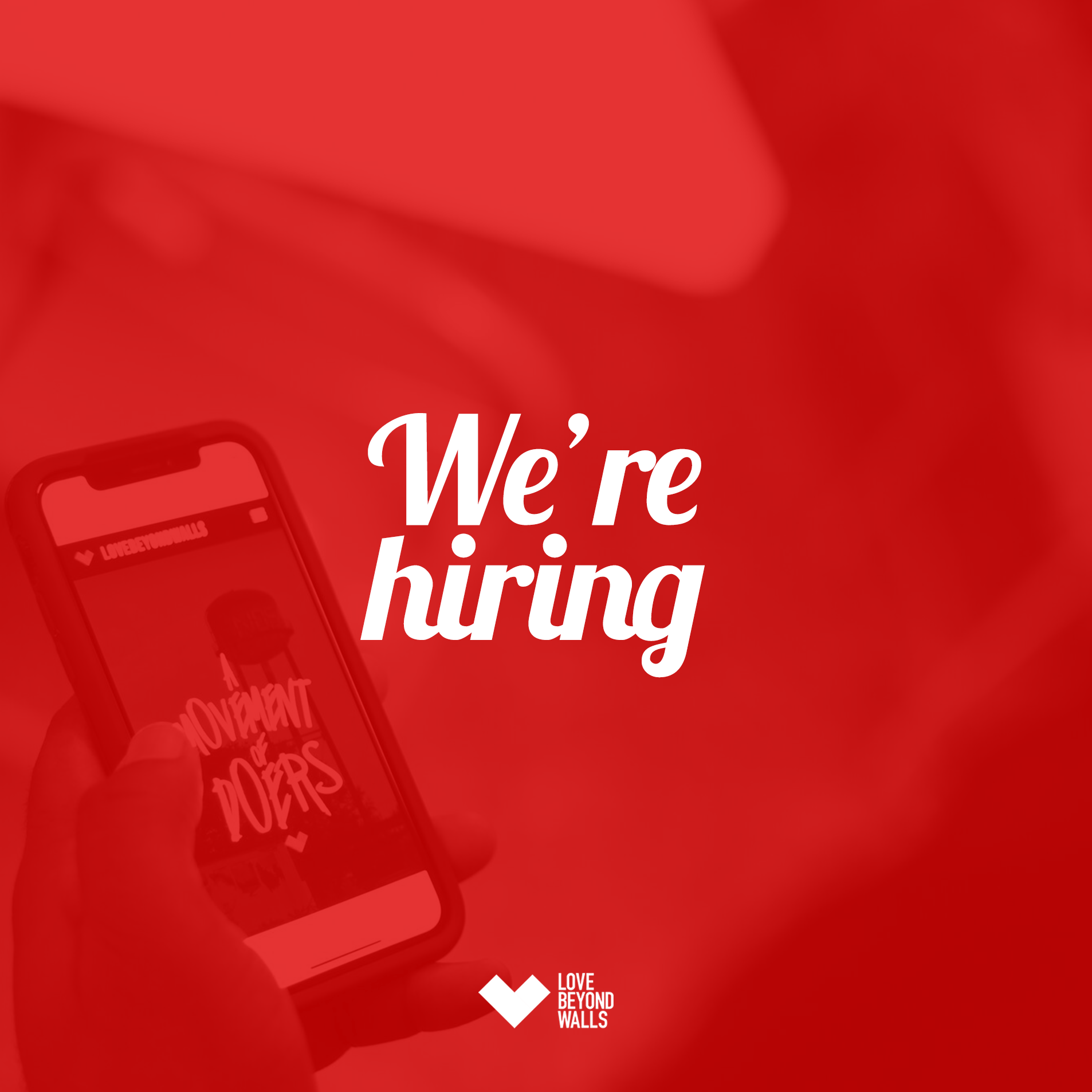
We’re Hiring a Part-Time Person!
Love Beyond Walls (LBW), a well-respected and growing organization, seeks a part-time person to assist with its mission of giving a voice to the voiceless.
This part-time person will work 10-15 hours each week and will work closely with our leadership team at LBW.
Send resumes and inquiries to info@lovebeyondwalls.org

What is Gentrification?
Gentrification is a general term for the arrival of wealthier people in an existing urban district, a related increase in rents and property values, and changes in the district’s character and culture. The term is often used negatively, suggesting the displacement of poor communities by rich outsiders. But the effects of gentrification are complex and contradictory, and its real impact varies.
Many aspects of the gentrification process are desirable. Who wouldn’t want to see reduced crime, new investment in buildings and infrastructure, and increased economic activity in their neighborhoods? Unfortunately, the benefits of these changes are often enjoyed disproportionately by the new arrivals, while the established residents find themselves economically and socially marginalized.
Gentrification has been the cause of painful conflict in many American cities, often along racial and economic fault lines. Neighborhood change is often viewed as a miscarriage of social justice, in which wealthy, usually newcomers are congratulated for “improving” a neighborhood whose poor, minority residents are displaced by skyrocketing rents and economic change.
Although there is not a clear-cut technical definition of gentrification, it is characterized by several changes.
LBW Team
Terence shares stories in a video that will be played at Creative Mornings ATL this coming Friday (5-25-18).
We are grateful that the Friendly Human shot this video in Memphis, TN during the #MAP18 campaign.
To grab tickets visit this link:
https://creativemornings.com/cities/atl
LBW Story – Friendly Human + Creative Mornings ATL from Love Beyond Walls on Vimeo.
LBW Team
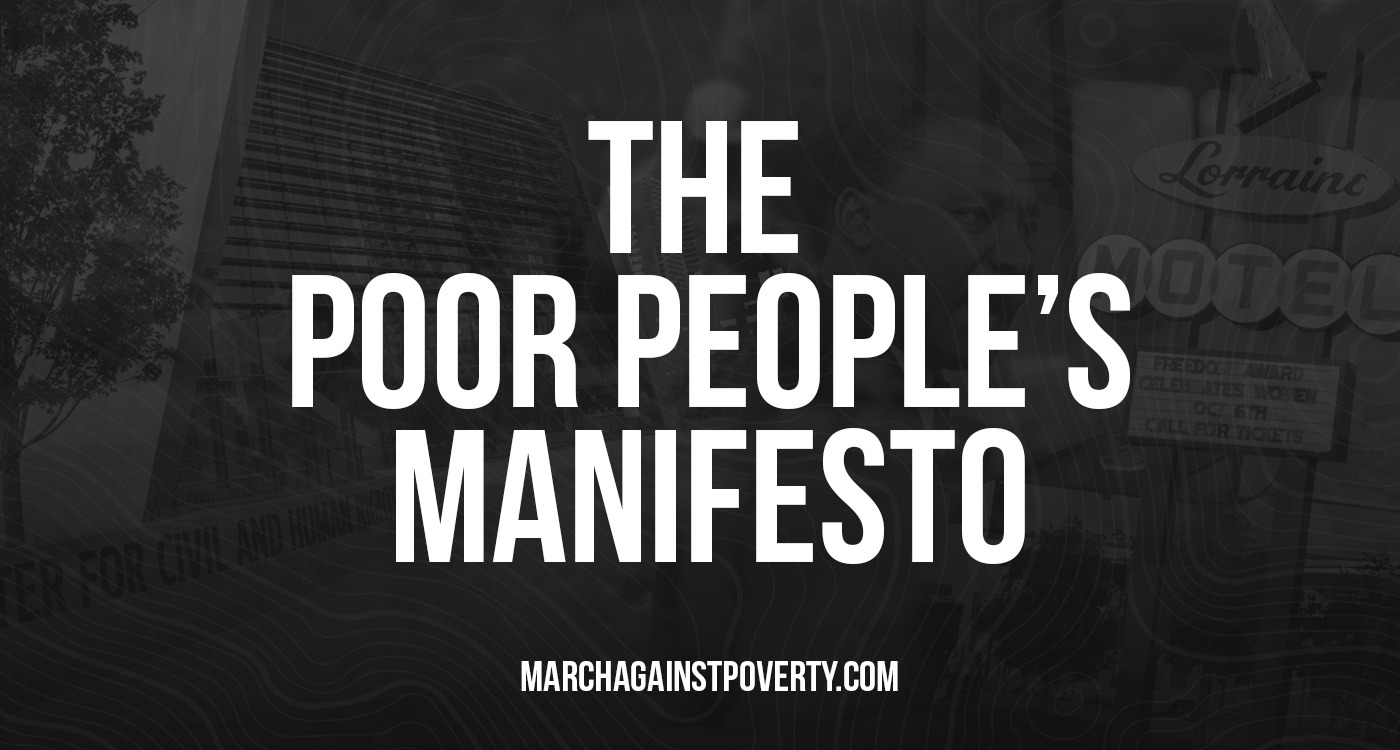
The Poor People’s Manifesto
According to the latest census, 40.6 million people live in poverty in the US. Almost half of those people live in extreme poverty. (Their cash income is about $10,000 for a family of four.) 14.5 million of those in poverty are children. Half of those living below the poverty line are actually making less than $16,000 a year, while the top 1 percent make $1.3 million a year.In 2015, 24% of Black people in America were living in poverty, 21% of Hispanic people were living in poverty, 11% of Asians were living in poverty, and 9% of white people were below the poverty line.
Did I lose you?
I imagine these numbers have not left any great impact in your mind. We’re accustomed to seeing statistics, numbers, and percentages of horrific things that happen in the world: shootings, the opioid epidemic, modern-day slavery, sex trafficking, the list goes on. Numbers associated with tragedies are listed on our social media feeds and news stations daily.
The more headlines we scroll past, the more we must numb ourselves to their present reality in our lives. While these tragedies amass, our lives continue. Your work deadline is still Friday, your kids have to be picked up from school, and bills are due at the end of the month. Like Stockholm Syndrome, we develop a relationship with the things that threaten our lives. We numb the stories of tragedy in order to continue on with our lives. We keep our fingers crossed that it doesn’t happen to us.
What does it do to us though when we begin to rationalize and intellectualize children starving in our streets? What does it do to a society that moves on without counting the consequence of our collective inaction?
Beyond the numbers and flowcharts, are yes, names and faces. But of course, intellectually, you know that too. What you do not know, are their stories. You do not know what has brought them to where that are and if that same thing couldn’t have happened to you.
Poverty is much more than a number or even a name or a face. It is a storyline that has been deeply rooted in the fabric of our society for generations and generations.
Unfortunately, our individualistic culture tells us that oppression, slavery, and poverty are not our fault, because have we owned slaves? Or oppressed our neighbors? Most of us have not. And see, that’s where the hard work comes in. It’s easy to identify a racist with a confederate flag and a hateful slur, but it is more difficult to identify where we have benefitted from a system that has oppressed and put down the already poor and marginalized.
How to Read This Manifesto:
This manifesto will touch on some of these systemic qualities. We will identify some stereotypes and mistruths about those experiencing poverty. While we hope this to be a comprehensive guide, there will be more work to be done for each of us individually as we come to terms with what role we play in our society. We encourage you to read this with an open mind. If and when something makes you uncomfortable, do not turn the page. Pause, breathe, and dive into feelings of discomfort that are brought up.
Further, in discovering these truths and exploring our history, we ask that you engage in conversations with others. For it is our belief that a society will only begin to change when we are open, honest, transparent, and willing to confront our worldviews with ourselves and each other.
Let’s Talk About Class:
A social class is defined as, “a division of a society based on social and economic status.” Sociologists say there are generally five social classes. You’ve probably heard them, “Upper-Class,” “Upper-Middle Class,” “Lower-Middle Class,” “Working Class,” and “Poor.” The classes are usually based on wealth, educational attainment, occupation, income, and membership in a subculture or social network.
In India, the caste system was a class structure determined by someone’s birth. So if someone was born poor and in a lower caste they would stay poor and in a lower caste. Same for someone born in an upper caste. There was no social mobility and an unequal access to wealth based on the caste you were born into. The caste system was abolished in 1949 but the effects of the system are still felt.
In the United States, we have no formal caste system that determines what job people will have and how much money they will earn. Instead, we have a capitalist system, “an economic system in which individual people make most of the decisions and own most of the property in a country.” In this system, there are free markets and competition people for business and wealth. It means that things like the prison system and healthcare allow private parties to make money off of what many consider fundamental rights. This system can make it difficult for people in the Working Class and Poor Class to have equal opportunities.
So while we do not outwardly label people based on a caste they inherited by birth, many people are still not able to access things like healthcare, employment opportunities, healthy food, and good education, still, because of the environment they were born into.
We inherit the socioeconomic status that our parents occupy and most likely, it’s the same class that has been passed down through the generations. There is an idea in our culture that, “anyone, regardless of his or her socioeconomic history or social position, can make it to the “top” if he or she works hard…” That belief is one that holds the fabric of what the United States is built on together. We would like to believe it is true. Unfortunately, that isn’t exactly how it works.
What put people in these classes in the first place was based on discrimination: gender, race, age. Our society deemed some persons more worthy than others based on those characteristics. We’ve come a long way, we can’t deny the progress we have made as a nation. But we still do discriminate based on the numbers in a bank account, land owned, and the label on someone’s jacket.
The declaration of independence states that, “all men are created equal.” Yet the classes define how each man is treated. In most cases, research shows that the poor will remain poor and the rich will remain rich. What causes this is diverse. We won’t be able to address every potential scenario but here are a few that illustrate what makes it so hard to rise from a working or poor class.
Most public schools are funded by local property taxes. That means the richer the community, the more funding the school receives to educate the students. Education is one of the leading forces in aiding in the rise of class or to earn a higher income. Children pay the price for living in a poorer district.
Individuals in the working class that work a full-time minimum wage job still do not make enough money to pay their bills, feed their families, and save money to move to invest in their futures. How do they get a job that pays more when they are working the job because it matches the level of education that was afforded to them?
Children born into poverty also battle psychological barriers that keep them from thriving and moving up in class. Psychology Today says, “Unfortunately, stress and poverty go hand-in-hand. More important than unhealthy lifestyles and lack of access to good healthcare, chronic stress makes many susceptible to cardiovascular disease, high blood pressure, depression, and diabetes…Poor children experience high levels of stress because, amongst other reasons, they live in violent neighborhoods, walk across many busy vehicular intersections, move residences twice as often and get evicted five times as often as the average American, are more likely to be bullied in school.”
These are only the beginning of the list of barriers that hinder people from moving class. If you have questions or want to know more, I encourage you to research the history of poverty and classism.
I understand systemic poverty because I watched my mother struggle to feed us. I understand discrimination because I’ve feared for my life because of the color of my skin. I know what it feels like to be told again and again that you are unworthy because of what you do or do not have. I’ve heard the stories of thousands of poor and homeless persons and I’ve seen myself in all of them. I fought against the odds and wanted to give up.
I imagine you have felt this way too. The pain of the human experience binds us all in some way. We know what it is like feel ashamed, not worthy, and forgotten. Poverty for many of us is tied to the number on our bank accounts, and for others of us, it is tied to the messages we’ve heard all our lives. Either way, we are created equal. So how do we step out of a modern-day caste system and see one another as brothers and sisters in our journey through life?
Who Are The Poor?:
When we look to fact find and search for solutions to the poverty epidemic I suggest that instead of combing through statistics and theorizing back and forth, we turn to those around us who have actually experienced the burden of living in need.
The sum of what I’ve learned has come partially from books, but majorly from the relationships I’ve cultivated with those along the journey. To understand poverty in context you must go to the main source, those experiencing poverty first hand.
We amplify success stories, people who’ve climbed to the top of the ladder and forget those who were left behind. Maybe it’s our human nature to compete and fight our way to be the best. But we’re not all playing by the same rules. Those we’ve left behind and forgotten are more than numbers but have intricate stories that could’ve been any of us.
Let’s talk plainly about the stereotypes placed on the poor.
What makes poor people poor?
They’re lazy. Uneducated. Criminals. They choose to be poor. They’re mentally ill. They’re drunks with substance abuse issues.
First, I would challenge you to ask yourself where these beliefs about the poor began. Did they form from experiences you’ve had with the poor? From the media? From your family?
One day I was at a service day in downtown Atlanta and felt compelled to talk to a man who was stumbling down the sidewalk. I introduced myself and asked him his name. He told me, “I’m not gonna lie to you. I’m a drunk. I’m an alcoholic.”
He started to cry and told me he wanted to share something with me, “I haven’t shared this with anybody but…when I was a kid my grandfather used to have to watch me because my mom was a single parent. My grandad hated watching me. When I was nine he gave me alcohol and sent me into the other room and used the alcohol to keep me quiet. I was drunk at 9 and by the time I was 12 I was addicted.”
To fully understand the context of the person you have to go beyond the surface. Someone who has been medicated with alcohol from the age of nine is not lazy, uneducated, or chose to be poor. Neither is he simply a “drunk” or “alcoholic.” He is someone just like you and me who was treated unfairly as a child with a wound that’s lasted him his entire life.
Do you imagine at the depths of someone’s soul they desire to be dependent on a substance and living on the streets? We can do better. In the richest nation in the world, we can provide training, we can help them get a job with reasonable wages, we can ensure security and basic human needs are met.
What about work?
America’s complex history led to its unequal treatment of citizens through practices like slavery, redlining, and all forms of discrimination. Discrimination led to minorities with little or no assets, no property, and no jobs.
Most people who live below the poverty line work minimum wage jobs. The current federal minimum wage is $7.25, which comes to a little over $1,100 a month if someone is working full-time.
The current poverty line is $11,880/year for a single individual and $24,300 for a family of four. If you were to climb $100 over the poverty line, that would cut off all your benefits, and you still would not make enough to survive. So that type of system that keeps people dependent on a system and therefore entrenched in poverty.
The Poor Are People
It’s a terrifying thing to live in constant lack. It’s even more unsettling to discard a person in our society because they do not attain the assets we had, most of which we were granted by good fortune.
The poor are people, we must not forget.
What is at Stake?:
A society that accepts the fact that children, women, and men, are on our streets, sleeping under bridges, and dying from hunger and cold will never be great, or progress, and will decay as our souls choose possessions over people.
What is at stake when we choose material possessions and comfort over the safety of our peers? When we drive past people holding their signs again and again?
We idolize the materialistic benefits from a capitalist society instead of valuing the human capital that surrounds us.
Martin Luther King Jr. said, “Whatever affects one directly, affects all indirectly. As long as there is poverty in this world, no man can be totally rich even if he has a billion dollars.”
We make each other wealthy when we are caring for one another in ways that provide every man, woman, and child a seat at the table and an equal opportunity to succeed. It’s not the resources that we have that make us rich, it’s the relationships we have and the connectivity of a global village.
When we choose instead the chase of more, we become shallow and perpetuate a hollow facade. We will live behind veneers of what success looks like while we are never fully satisfied.
It is a simple message at its core. We either become a society and a people with all the resources in the world that choose to become responsible and care for the people around us or we choose to build our own kingdoms at the expense of those suffering.
What Can We Do?
We cannot let poverty persist and plague our nation. We must take responsibility for our brothers and sisters, the citizens of our country. They must be afforded the same rights.
We call for a solution. Different sides of politics can no longer divide men, women, and children from the basic necessities to live—and more than just survive. We call for a solution that eradicates the poverty class by ensuring a livable wage and opportunity is provided for every citizen.
We call for a visibility of the poor and to ensure:
- The Poverty Elimination Fund
- A fund derived from a percentage of a tax that would go to local and federal programs dedicated to alleviate issues stemming from poverty. (Ex. aid for the water crisis in Flint, MI. or local housing and job programs.)
- Abandoned Building Clause
- A law that states that any abandoned buildings owned by the government that has been empty/unused for 5 years are allocated a % of local govt taxes to use on building that must benefit the community. (Empty buildings are costing taxpayers billions and even government officials know that there is a better way.)
- Living wages
- The poverty line and minimum wage is not a livable wage. New standards need to be in place as to what defines “livable.” These standards must be decided by lawmakers and include a vote by 51% people who have lived in poverty for 15+ years.
If you think that these requests are far fetched or unreasonable, let me present you with some highlights from the 2016 Budget Fact Sheet on Homeless Assistance.
Education for Homeless Children and Youth: $71.5 million
Health Care for the Homeless: $371 million
Projects for Assistance in Transition from Homelessness: $65 million
Treatment Systems for Homelessness: $41 million
Homeless Prevention and Housing Programs: $33 million
Runaway and Homeless Youth Act: $123 million
Department of Housing and Urban Development Programs: $2.480 billion
Emergency Food and Shelter Program: $100 million
Homeless Veterans’ Reintegration Program: $38 million
Homeless Providers Grant and Per Diem (GPD) Program: $201 million
The Domiciliary Care for Homeless Veterans Program: $183 million
Healthcare for Homeless Veterans Program: $155 million
The Justice Outreach, Homelessness Prevention: $38 million
That comes to a total of: $3,899,000,000 spent on the 40.6 million people living in poverty and homelessness. You could give each person in poverty a million dollars every year and still be saving over $3.500 billion dollars.
Surely we can consider alternative solutions that provides people with incomes rather than funding programs with billions of dollars.
Martin Luther King Jr made these notes on his plans to eradicate poverty, “The contemporary tendency in our society is to base our distribution on scarcity, which has vanished, and to compress our abundance into the overfed mouths of the middle and upper classes until they gag with superfluity. If democracy is to have breadth of meaning, it is necessary to adjust this inequity. It is not only moral, but it is also intelligent. We are wasting and degrading human life by clinging to archaic thinking.
The curse of poverty has no justification in our age. It is socially as cruel and blind as the practice of cannibalism at the dawn of civilization, when men ate each other because they had not yet learned to take food from the soil or to consume the abundant animal life around them. The time has come for us to civilize ourselves by the total, direct and immediate abolition of poverty.”
For Churches:
We ask that churches take a commitment to live out the gospel as was demonstrated and to keep a commitment to love thy neighbor as yourself. These requests are adapted from these two passages:
“Jesus said to him, “ ‘You shall love the LORD your God with all your heart, with all your soul, and with all your mind.’ And the second is like it: ‘You shall love your neighbor as yourself.’” —Matthew 22:37, 39
“Then the King will say to those on His right hand, ‘Come, you blessed of My Father, inherit the kingdom prepared for you from the foundation of the world: for I was hungry and you gave Me food; I was thirsty and you gave Me drink; I was a stranger and you took Me in; I was naked and you clothed Me; I was sick and you visited Me; I was in prison and you came to Me.’ “Then the righteous will answer Him, saying, ‘Lord, when did we see You hungry and feed You, or thirsty and give You drink? When did we see You a stranger and take You in, or naked and clothe You? Or when did we see You sick, or in prison, and come to You?’ And the King will answer and say to them, ‘Assuredly, I say to you, inasmuch as you did it to one of the least of these My brethren, you did it to Me.’” —Matthew 25:34-40 NKJV
For Civic Organizations:
We ask for a commitment to hold these values true:
- Dignity
- Love
- Sacrifice
- Generosity
- Justice
Our society and the plight of the poor depends heavily on the individual citizens and organizations to uphold these ideals when engaging with one another.
What Can You Do?
In conclusion of reading this manifesto we ask two things:
- Sign the petition to call for a solution for poverty.
- Adopt these tenants:
-
- Long Obedience – Adopt a mindset of resilience and commitment. The journey to changing this issue is a long road and not a short path.
- Instead of being driven by news cycles, we must choose to become dedicated to issues we care about and be willing to fight and have long obedience to see the solutions.
- Collaboration With One Another – Work intandom with other groups, agenginces, and people of good will to make changes locally and nationally.
- Openness – Remain open to learn new ideas, and allow those ideas to influence your involvement.
- Responsibility for One Another – Understand that we need each other in an interdependent manner.
- Solution Oriented – Commit yourself to being a person that thinks critically about providing solutions and not only focusing in on the problems.
- Generosity – Live with extreme generosity knowing that you excess could be the answer to someone’s problem.
- Value People Over Things – Place a higher value on people than material possessions.
- Love Above All Else – Love like God intents.
-
Sign our petition [HERE]
LBW Team
Finish Line Recap – MAP18 from Love Beyond Walls on Vimeo.
There’s an old adage that goes something like this, “A family that prays together stays together!” It was first coined in the early by Father Patrick Peyton, a Irish Roman Catholic priest and founder of the “Family Rosary Crusade.”
Peyton was a popular and charismatic figure in Latin America and popularized the phrase “The family that prays together stays together” in the early 1900’s.
Without damaging the integrity of what Peyton was trying to communicate, I’d like to alter this phrase just a tad.
While walking on #MAP18 to bring attention to the poor and vulnerable, my wife and I have learned that not only does “a family prays together stays together,” but also “a family that sacrifices together must also endure burdens together.”
I love my family, and I know this journey has been hard on them like it has been hard on me.
In fact, if you know me then you know that family and friendship mean a lot to me. My family is my heartbeat and I don’t call a lot of people friend. But, if I do call you friend then I do really mean it.
Over the last 23 days, my wife and children have had to endure some of the same hardships that I have experienced. Why? Because whatever I carry they carry as well.
For instance, on the last walk to Washington D.C., they were able to walk with me and experience the walk too, but on this walk we felt that it was safer for them to be present but not walk.
My wife opened up and did an interview to explain what she has felt while I’ve been on this particular walk.
You’ll be able to view that below, but I would like to first share a few things that my wife and I have learned is this journey:
Here goes…
I. We’ve learned that when one person in the family is called to a mission, everyone in the family is called to that same mission.
It must be agreed upon by everyone in the family to carry the load and sacrifice. If everyone is not on board, then it will make the mission even harder. As a family, we all feel like this is what we were assembled to do together as a unit—serve those who are forgotten.
II. We’ve learned that when one person feels pressure, everyone feels that pressure.
For instance, in the video below my wife explains what she’s been carrying although not walking with me every single day.
One of the ways we maintain strength is by reminding each other of our original commitment to finish what we’ve started no matter what the outcome is.
III. We’ve learned that if children are present, they are watching.
On day 22, my daughter wrote me a note about what she is learning from watching my wife and I.
She said, “I’m learning that when we take care of those who are poor, God takes care of us.” Each day, I’m not only driven by who I’m fighting for, but by who is watching me—my children.
Check out the full video below to hear my wife’s side of the story below:
Cecilia’s view of MAP18 from Love Beyond Walls on Vimeo.
Terence


